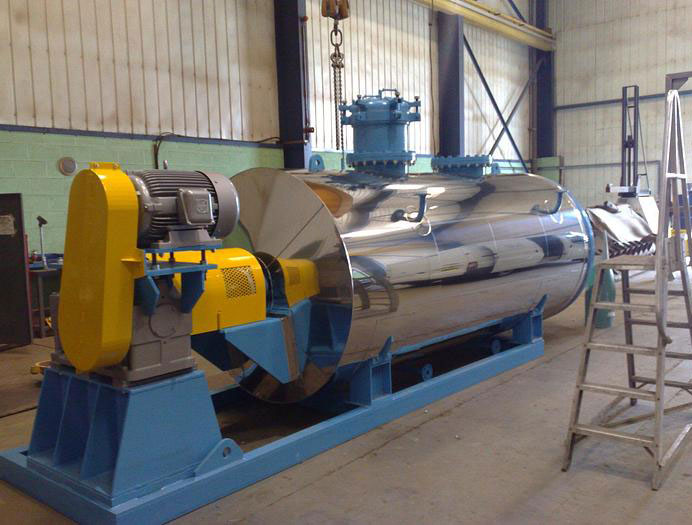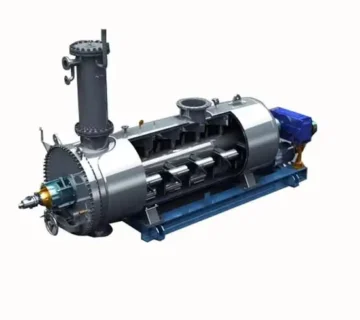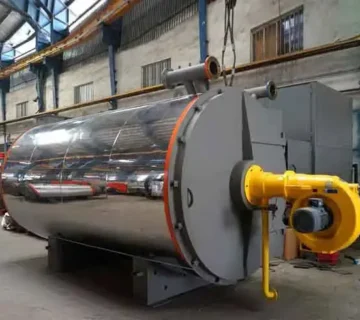Chicken Waste Cooking Vessel: An Efficient Solution for Poultry Slaughter Waste Management
Introduction
The poultry industry and slaughterhouses generate substantial amounts of waste daily, including chicken skins, bones, fats, and other inedible parts. Managing these wastes is crucial not only for environmental protection but also for turning valuable resources into beneficial products. One of the most effective solutions for processing and recycling chicken slaughter waste is the chicken waste cooking vessel. This equipment uses advanced technology and thermal processes to convert chicken waste into valuable by-products. In this article, we will explore the benefits of using chicken waste cooking vessels, their working process, and how they can positively impact businesses.

What is a Chicken Waste Cooking Vessel?
A chicken waste cooking vessel is designed to process and recycle waste from poultry slaughterhouses. Through controlled heat treatment, it converts chicken waste into useful products such as protein meal, industrial fats, and organic fertilizers. The design of these vessels ensures efficient recycling, reducing harmful waste and minimizing environmental impact.
How the Chicken Waste Cooking Vessel Works
The chicken waste cooking vessel utilizes thermal processes to separate valuable materials from waste. The high pressure and heat break down organic materials like proteins and fats, converting them into usable by-products. This process not only prevents waste but also reduces environmental pollution.
Here are the key steps involved in the cooking process:
- Collecting and Grinding Waste: Chicken waste, such as skin, bones, and other inedible parts, is collected and mechanically ground.
- Cooking at High Temperature and Pressure: The ground waste is placed into the cooking vessel, where it is cooked at high temperatures (around 150-180°C) under pressure. This step helps separate proteins and fats from the rest of the material.
- Separation of Final Products: After cooking, different products such as protein meal, fats, and water are extracted from the waste, turning it into valuable resources.

Benefits of Using a Chicken Waste Cooking Vessel
The use of a chicken waste cooking vessel offers a multitude of benefits for both the environment and businesses involved in the poultry industry. Some of the key advantages include:
- Reduction of Waste and Environmental Pollution: One of the biggest challenges faced by slaughterhouses is managing the large amount of waste generated daily. Chicken waste cooking vessels reduce the volume of waste, converting it into useful by-products and preventing environmental pollution.
- Production of High-Value By-products: These vessels turn waste into valuable products such as protein meal, which is widely used in animal feed, and industrial fats, which are utilized in producing items like soap and detergents.
- Cost Savings: By recycling chicken waste, slaughterhouses can significantly reduce their waste disposal costs and instead generate products with market value. This leads to resource optimization and increased profitability.
- Efficient Use of Resources: By utilizing every part of the chicken, including waste, businesses can maximize the efficiency of their production processes and minimize resource wastage.
- Increased Productivity and Sustainable Production: With the adoption of this technology, slaughterhouses can improve their productivity and manage their production in a more sustainable way. This makes them more flexible to regulatory changes related to environmental protection.
Applications of By-products from Chicken Waste Cooking Vessel
The by-products generated from chicken waste cooking vessels have numerous applications across various industries. Some of the key uses include:
- Animal Feed: The protein meal produced from chicken waste is a rich source of protein and is commonly used in animal and poultry feed.
- Cosmetic and Hygiene Products: Industrial fats derived from the cooking process are used in the production of cosmetic and hygiene products such as soaps and moisturizing creams.
- Agriculture: Organic fertilizers produced from chicken waste are valuable for improving soil quality and increasing agricultural productivity.
- Biofuels: Some of the fats and oils derived from the cooking process can be used as raw materials for biofuel production.

The Future of Chicken Waste Cooking Vessels
As the need for efficient waste management and environmental sustainability continues to grow, chicken waste cooking vessels will become increasingly important for the poultry industry. This technology not only helps protect the environment but also boosts the productivity and profitability of businesses. Additionally, with the advancement of new technologies, it is expected that chicken waste cooking vessels will become more efficient, offering enhanced capabilities to process different types of waste and produce higher-quality products.

Conclusion
The use of a chicken waste cooking vessel is one of the most efficient solutions for managing poultry slaughter waste. These devices convert waste into valuable products, reducing environmental pollution, and improving business profitability. Investing in chicken waste cooking vessels is not only a sustainable solution for waste management but also a long-term source of revenue for businesses involved in the poultry industry.



